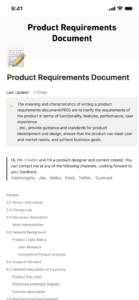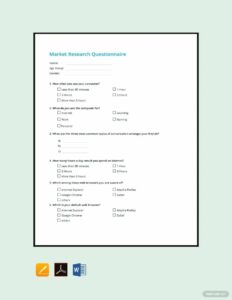The Notion project requirements template is a helpful tool for ensuring that your product meets the needs of your users. It can help you define the scope of your product, identify its key features, and establish its acceptance criteria. Using a template can save you time and effort, and it can help you avoid costly mistakes.
What’s Included in a Notion Product Requirements Template?
A Notion product requirements template should include the following sections:
- Product Description: This section should provide a brief overview of your product, including its purpose, target audience, and key benefits.
- Scope: This section should define the boundaries of your product, including what it will and will not do.
- Features: This section should list the key features of your product, along with their descriptions and acceptance criteria.
- Non-functional Requirements: This section should specify the non-functional requirements of your product, such as its performance, security, and usability.
- Dependencies: This section should list any dependencies that your product has on other products or services.
- Assumptions: This section should list any assumptions that you have made about your product, such as the availability of certain resources or technologies.
- Risks: This section should identify any risks that could affect the success of your product, along with their mitigation strategies.
How to Use a Notion Product Requirements Template
To use a Notion product requirements template, follow these steps:
- Gather your team: The first step is to gather your team together to discuss the product requirements. This team should include stakeholders from all relevant departments, such as product management, engineering, design, and marketing.
- Brainstorm: Once your team is assembled, brainstorm a list of product requirements. These requirements should be based on the needs of your users, as well as your own business goals.
- Prioritize: Once you have a list of requirements, prioritize them. This will help you focus on the most important requirements first.
- Document: Once you have prioritized your requirements, document them using the Notion product requirements template. This will help you keep track of your requirements and communicate them to your team.
- Review: Once you have documented your requirements, review them with your team. Make sure that everyone understands the requirements and agrees with them.
- Update: As your product evolves, your requirements will also need to evolve. Make sure to update your Notion product requirements template regularly to reflect the latest changes.
Conclusion
The Notion product requirements template is a valuable tool for ensuring that your product meets the needs of your users. It can help you define the scope of your product, identify its key features, and establish its acceptance criteria. Using a template can save you time and effort, and it can help you avoid costly mistakes.
If you are looking for a Notion product requirements template, there are many available online. You can also find templates in other formats, such as Microsoft Word and Google Docs.

